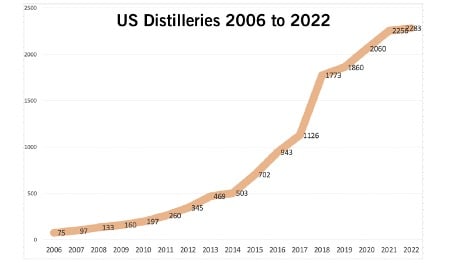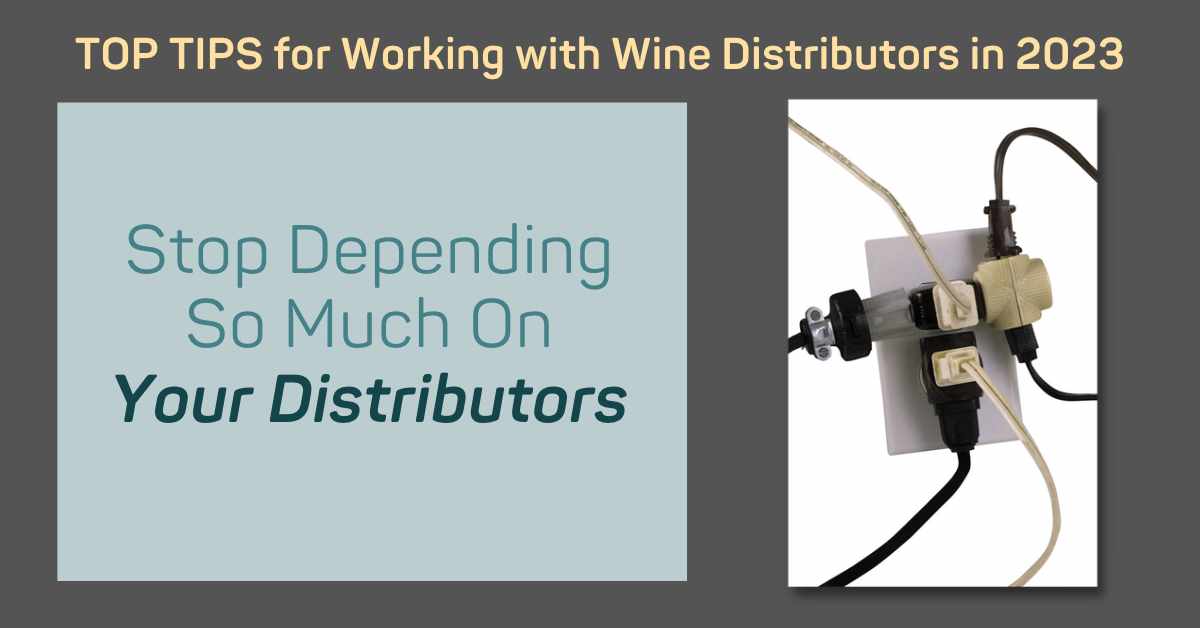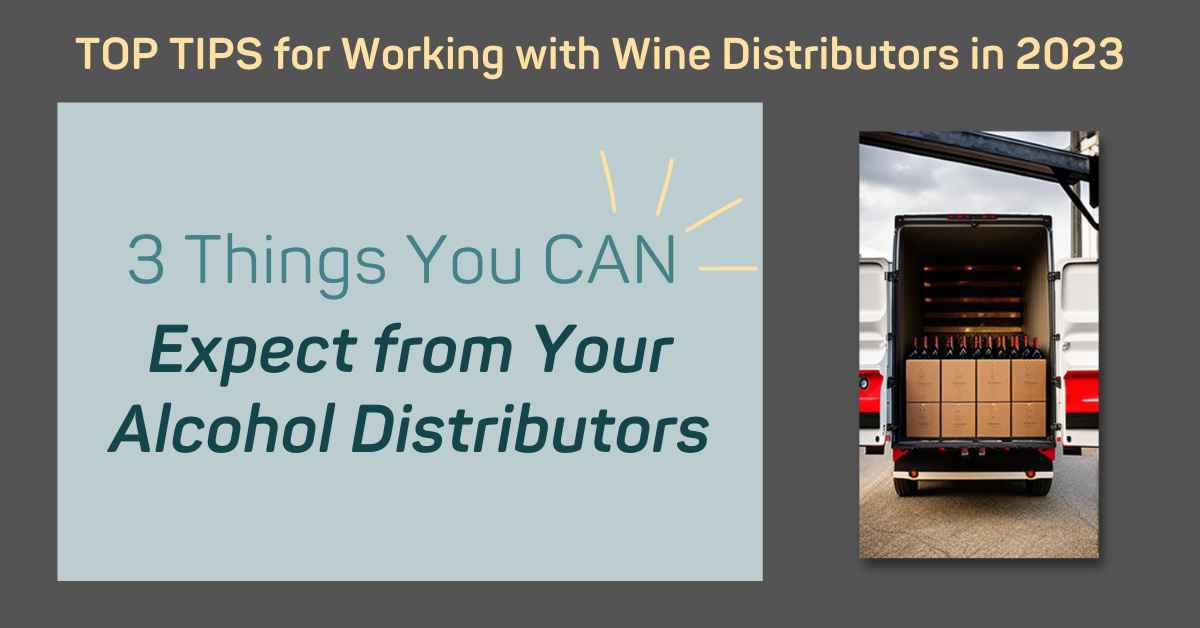3 Things You Need to Sell More Wine and 3 Things You Don’t
Selling more wine & spirits is the #1 imperative With very few exceptions, the number one request I get from my clients is to help them sell more wine
9 min read
 Dan Salisbury
:
10/13/22 7:34 PM
Dan Salisbury
:
10/13/22 7:34 PM
If you’re reading this, you’ve probably noticed by now that selling your wines or spirits online with wine marketing isn't always easy. Nobody gets into this industry because they’re passionate about sales.
The notion of growing one’s own grapes on a beautiful estate, more likely, or that of sampling a barrel of spirits a decade down the road and celebrating, are the romantic notions that possess people with the urge to write that initial check or take out those loans and leap headlong into business ownership. Who doesn’t want to sit around the fire pit, swirling a glass of one’s own wine and laughing with friends about all those mistakes and hurdles that now seem so small?
The story of how your winery or distillery came to be matters so much less than the way you tell your story to consumers. The following is an attempt to reframe this idea of “your story” so that it bears fruit when you communicate it to potential customers.
Well, why did you decide to start a winery or distillery? Maybe it was an urge to replicate the most special moments in your own life – to harness the sort of kinship and fun that microdosing ethanol – for whatever reason – facilitates, and to share that with others. Maybe you lacked direction in life and your father offered you a place in the family business. I wouldn’t know anything about that, though (turns out “famous author” and “musician” aren’t the best career paths if you want a house in the mountains).
Does it matter? A little. Sitting on a pile of juice and wondering where all the thirsty people went is a less advantageous starting point than if you had engineered your winery’s existence to meet a very specific demand.
The world doesn’t truly need another winery or distillery – anymore than it needs another Grateful Dead cover band. The TTB approved 111,400 wine labels so far this year! And, according to the recent ADI Craft Spirits Conference, there are now more than 2,200 craft distilleries in the US.

Chart courtesy of American Distilling Institute
The good news is that selling wine and spirits has very little to do with the product itself, and everything to do with clear communication. Sure, it helps if you’re uniquely positioned to fill a certain niche in the market, but, as Donald Miller famously writes in Building A Story Brand, “People don’t buy the best products; they buy the products they can understand the fastest.”
Oof. How often, in our industry, do we relish brevity?
If it takes an “About Us” section on your website to convince people how much heart and soul went into each and every ounce of product that reaches their lips (already quivering with anticipation, no doubt), they are likely never going to “get” it.
Before I started writing screenplays in my free time – ultrarunning wasn’t masochistic enough – I had never heard of a “log line” before. Turns out, everyone who writes movies wants those movies to get made, but not everyone who makes movies wants to read a bunch of glorified toilet paper. Screenwriters have about 30 words or 1-2 sentences to grab a producer’s attention. Think of a logline like a cover letter atop a stack of 200,000 résumés.
Producers do read a bunch of glorified toilet paper, though. Why? They know that 1 in every bajillion or so scripts could bump their career up to better jobs with bigger budgets. So, they get really good at ruling out ho-hum prospects based on just the logline – it doesn’t matter how good the actual script in question actually is.
Consumers are the same way, but less patient. There’s no reason for them to read anything that doesn’t immediately flood them with dopamine.
If you’ve ever gotten “hangry” over a conversation or car or person standing between you and lunch, you can understand the violence with which people scroll past most ads. Whether it’s 3 seconds or a fraction of a second – the amount of time you have to grab people’s attention online is cruel, because our brains are wired to conserve as many calories as possible until prey is within striking distance. (Again, credit to Donald Miller for this perspective.)
Think back to that “About Us” page. What if every nook and cranny of your website wasn’t about you at all, but about the role your products play in the lives and stories of your customers?
Now we’re getting somewhere.
In The Ultimate Guide to Facebook Advertising, Perry Marshall pits two partygoers against one another in the same scenario with two very different outcomes. Both are professional guitarists trying to get new students for their private lesson business.
One guitarist is a virtuosic performer who shows up to the party ready to dazzle his audience with his own performance. Everyone watches in amazement, thinking of how they could never achieve something like that, wondering how many hours of hard work it took him to get there.
The other guitar teacher, however, passes his guitar on to a guest and teaches the random bystander how to play his first ever song right on the spot. Instead of showcasing his own skill as a musician, he makes the newbie the star of the show.
You may think your winery or distillery’s story is about how it came to be, who’s behind the craft, or even your production methods, but the truth is that very little of that matters when it comes to the reasons people hit that “Proceed to Checkout' button.
Regardless of how you acquired the capital necessary to open for business, the process of pitching to investors works (or should have worked) like a flight simulator. If you can’t immediately and clearly articulate exactly how your products are going to help a very specific type of person achieve their own goals, that’s a serious warning sign that maybe you shouldn’t have left the runway just yet.
If you’re already in the air, so to speak, it may feel as though the time for prep work has long passed. Maybe you’re still shaking off imposter syndrome because you used your life savings or terrifying loans or your inheritance to realize your dreams – the economic equivalent of ending up in the cockpit without a pilot’s license.
Is your product a viable answer to a real demand in the real market? Other products are out there right now, engineered like Walter White’s little baggies of Blue to give people exactly what they’re already looking for.
Your livelihood depends entirely upon the degree to which your beverages help people thrive. Consider reverse engineering your offer from this perspective; if your prospective customers are on a quest for personal happiness, think of your brand like a special item or companion that they acquire along the way that helps them overcome their obstacles to live fulfilled and meaningful lives.
You need a unified, painfully obvious-at-a-glance message on every page of your site, every social handle you have, and every bit of POS that explains how your product is going to enrich your customer’s brief stint on this planet.
Imagine for a second that you actually, beyond dispute, make the best wines or spirits in the world. You’ve disproven the existence of Dionysus by his continued absence from your tasting room. No greater product exists.
It’s sad to write this, but I don’t think it would matter beyond a certain threshold. The consumer wants to believe their favorite brands make the best whiskey or the best cabernet, but they don’t really know. Having top-notch juice is just the starting line in this industry. Without business acumen, it’s the old tree falling in the forest again – the diner down the road claiming the “best burger in Los Angeles.”
Maybe you’ve received a 90+ point rating from Wine Enthusiast or a Double Gold from San Francisco International Wine Competition. Perhaps you’ve heard glowing reviews from everyone who comes in for a tour of the winery or distillery. “This gin is delicious, and I’m not usually a gin guy!” Maddeningly, sales keep trickling in at sub-par rates. So what gives?
Unfortunately, all that matters is the way in which your product ends up being enjoyed by real consumers out in the field. The way someone experiences your brand dictates the entire value that your offer holds for existing and prospective customers alike. There’s a reason Highland Park, The Macallan, or Lagavulin can charge what they do while Springbank and Kilchoman wallow in relative obscurity; nobody gets hoops and hollers at a bachelor party when they bust out a bottle of Old Pulteney 16 despite the miraculous liquid therein.
More and more, in today’s economy, where the customer has access to all of the buying power and information they need to make purchasing decisions, it’s the way you sell your product that matters more than the product itself. Hubspot’s CEO, Brian Halligan, waxes poetic on this in the introductory video for their Inbound marketing certification course.
Making things cheaper, more convenient, and ultimately a better experience from start to finish wins the day – even if your drinks are technically inferior. That hurts to admit for those of us who are passionate about the craft of incredible beverages! This isn’t anything new, however; the alleged inverse relationship between technical prowess and financial success has had artists of every discipline wailing for centuries!
Read people’s body language when they visit your booth at a trade show. Are they just trying to steal samples and GTFO? Let them! Do their eyes linger for an extended stay upon your print materials or menus? Are they thumbing through your brochures? That’s a lead – an invitation to make yourself available, back off, and listen again.
Everyone loves their own brand, and I mean that literally. Business owners are all passionate about their babies, the portfolio – all the blood, sweat, tears, and capital poured into the glass.
Where most salespeople and many owners go wrong, however, is allowing this over-eager, desperate sort of energy to leave their brains. Guaranteed, many of the personnel pouring samples are essentially just gym rats just dying to regurgitate product knowledge all over their visitors. This is a real opportunity for your brand to stand out.
While not the most cost effective marketing strategy, trade shows are a great proving ground for your listening skills – a place to test your unified message, whether you’re in the early stages of your business or revisiting your strategy altogether. Just don’t expect too much fruit from plane tickets and in-person events like these. Use them as a laboratory for great storytelling!
We invite you to download our checklist of steps to help you rework your winery story in a way that helps your customers. The download also consists of 7 other checklists to guide you on marketing topics like SEO, Paid Social Ads, Organic Social Posts, and more.
Active listening is the key to success across all channels. When digital marketers say things like “data is everything,” they are referring to this exact feedback loop. Every reaction, share, click, email open, AddToCart, Purchase, and Subscribe is a clue as to how your story is being received by that particular audience. By paying attention to who is engaging the most, storytellers (marketers) have access to improved targeting with warm audiences (remarketing).
Changing just one variable at a time through split testing (aka “A/B testing”) is how digital marketers turn every campaign into an environment ripe for active listening. It’s how they tell what’s “working” and what’s not about any given marketing message – so that they can adjust their story accordingly so that it’s optimized for the best performance, the most efficient path to desired business outcomes.
What it means for a headline or an image to “work” better than another depends on the goal of the campaign. Which image is yielding a lower Cost per Lead in the ads dashboard? If I use headline A instead of headline B, why does my Cost per Link Click go up? Again, this is only possible to discern by tweaking only one element of an ad at a time. Changing multiple elements at once is just bad science: anyone’s guess as to why ad 𝑥 is working better than the others.
Few authors have done as clear and concise a job of explaining the fundamentals of the business/consumer relationship as Donald Miller in Building A StoryBrand: Clarify Your Message So Customers Will Listen. While I’m not a StoryBrand Certified Guide or affiliated with him in any way, I hope that only lends credibility to my sincere endorsement of his work.
In his StoryBrand approach, Miller assigns clear roles to both the consumer and your brand:
Taking this customer-centric approach – instead of a product-centric one – to telling your winery or distillery’s story transforms your brand’s message from more advertising noise into the very mechanism for the customer’s self-actualization.
Wine and spirits consumers are already headed down their own path to success – with or without you. By playing a critical role in their story – instead of treating them like cashflow – your brand becomes an indispensable source of value, a trusted advisor, that the customer simply can’t afford to ignore if they want things to change.
Here at Wine Sales Stimulator, we’d dump all the wine in the world for a good story. We live and breathe copywriting like it’s our dying wish. If you have any questions at all about how to get in front of an audience, email help@winesalesstimulator.com and let’s see what makes your story worth telling.

Selling more wine & spirits is the #1 imperative With very few exceptions, the number one request I get from my clients is to help them sell more wine

Is there anything more disconnected from reality these days than the expectations from winery owners of what a wine distributor can do for your...

When it comes to working with alcohol distributors in 2023, one of the biggest mistakes I see winery and distillery owners make is depending too much...